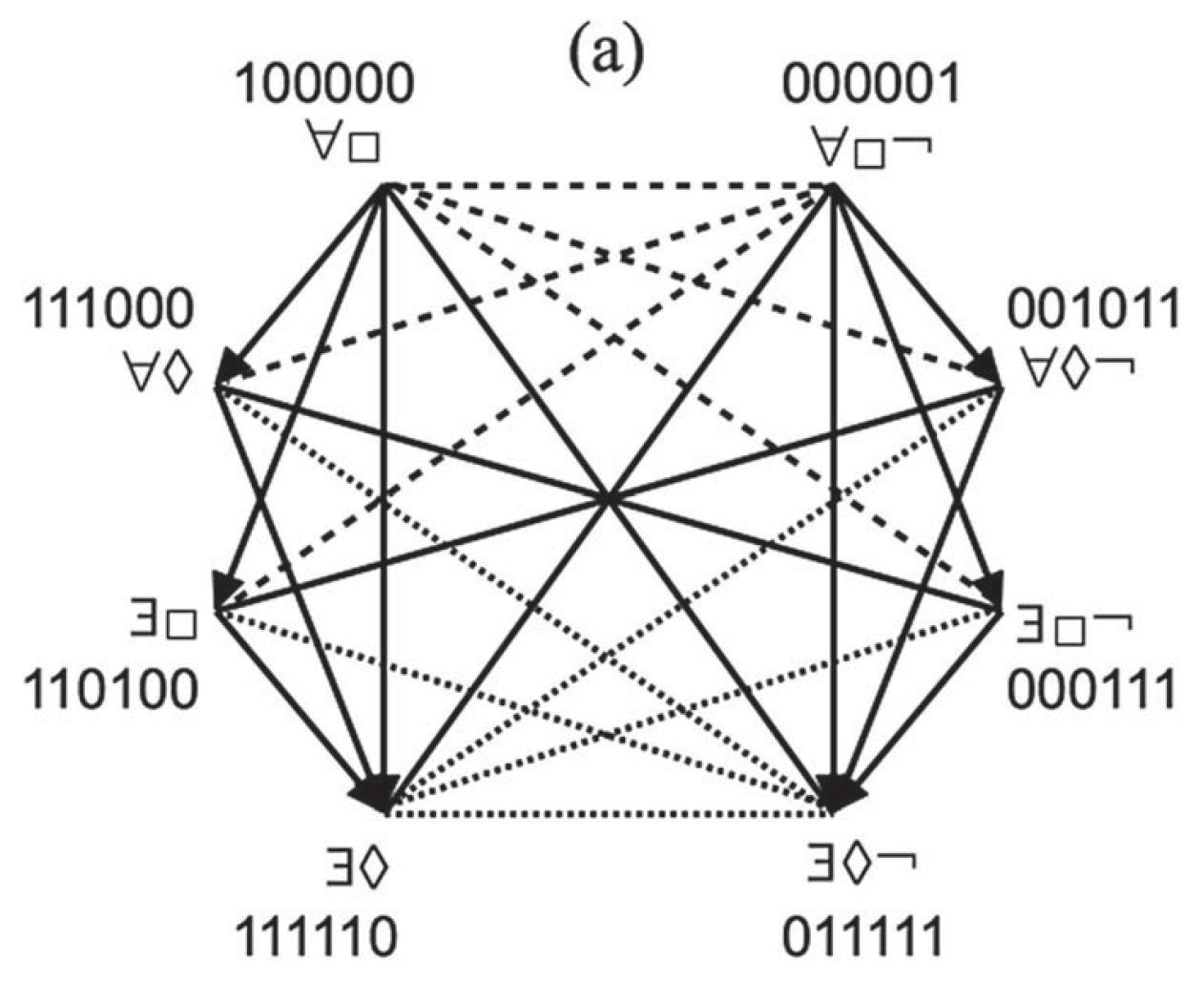
Boolean considerations on John Buridan's octagons of opposition (2019), p. 127
by Demey, Lorenz

Copyright according to our policy
Caption
- The bitstring representations of Buridan’s (a) modal octagon and (b) unusual construction octagon.
- Aristotelian family
- Buridan Sigma-4
- Boolean complexity
- 6
- Number of labels per vertex (at most)
- 2
- Equivalence between (some) labels of the same vertex
- No
- Analogy between (some) labels of the same vertex
- No
- Uniqueness of the vertices up to logical equivalence
- Yes
- Errors in the diagram
- No
- Shape
- Octagon (irregular)
- Colinearity range
- 0
- Coplanarity range
- 0
- Cospatiality range
- 0
- Representation of contradiction
- By central symmetry
Logic
Geometry
- Conceptual info
- No
- Mnemonic support (AEIO, purpurea ...)
- No
- Form
- none
- Label type
- symbolic
- Symbolic field
- bitstrings ,
- logic
- Contains partial formulas or symbols
- Yes
- Contains protobitstrings
- No
- Bitstring length
- 6
- Logical system
- modal syllogistics
- Contains definitions of relations
- No
- Form
- dotted lines ,
- solid lines ,
- none ,
- dashed lines
- Has arrowheads
- Yes
- Overlap
- No
- Curved
- No
- Hooked
- No
- As wide as vertices
- No
- Contains text
- No
- Label type
- none
Vertex description
Edge description
- Diagram is colored
- No
- Diagram is embellished
- No
Style
Additional notes
- $\forall\Box\textcolor{white}{\neg}$ = all S are necessarily P = $\exists x \Diamond Sx \wedge \forall x (\Diamond Sx \to \Box Px)$
$\forall\Diamond\textcolor{white}{\neg}$ = all S possibly P = $\exists x \Diamond Sx \wedge \forall x (\Diamond Sx \to \Diamond Px)$
$\exists\Box\textcolor{white}{\neg}$ = some S are necessarily P = $\exists x (\Diamond Sx \wedge \Box Px)$
$\exists\Diamond\textcolor{white}{\neg}$ = some S are possibly P = $\exists x (\Diamond Sx \wedge \Diamond Px)$
$\forall\Box\neg$ = all S are necessarily not P = $\forall x (\Diamond Sx \to \Box \neg Px)$
$\forall\Diamond\neg$ = all S are possibly not P = $\forall x (\Diamond Sx \to \Diamond\neg Px)$
$\exists\Box\neg$ = some S are necessarily not P = $\neg\exists x \Diamond Sx \vee\exists x (\Diamond Sx \wedge \Box\neg Px)$
$\exists\Diamond\neg$ = some S are possibly not P = $\neg\exists x \Diamond Sx \vee\exists x (\Diamond Sx \wedge \Diamond\neg Px)$
Cf. p. 118.